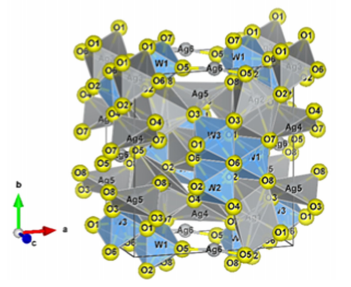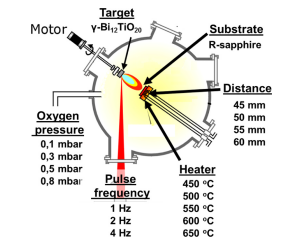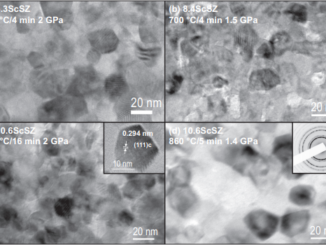
Luminescence properties of alpha-Ag2WO4 nanorods co-doped with Li+ and Eu3+ cations and their effects on its structure
Abstract: Nanorods of the formula alpha-(Ag2-3x-yEuxLiy)WO4 (where x = 0.01 y = 0.01-0.03 mol) were efficiently synthesized via a low temperature (90 degrees C) co-precipitation (CP) method. They were structurally characterised using both: X-ray powder diffraction (Rietveld refinement) and low temperature (20 degrees C to -19 degrees C) micro-Raman spectroscopy. The morphology of the nanorods was confirmed with field emission scanning electron microscopy. The peaks in the XRD patterns of alpha-(Ag2-3x-yEuxLiy)WO(4 )samples were all indexed to the pure orthorhombic phase of alpha-(Ag2-3x-yEuxLiy)WO4 and are in good accordance with ICSD no 4165. These results indicate that Eu3+ and Li+ ions have both been introduced efficiently into the alpha-Ag2WO4 lattice. Moreover, the Li+ co-dopant facilitated smoother incorporation of Eu 3+ concentration into the alpha-Ag2WO4 lattice with less distortion of the lattice. In addition the presence of the Li+ co-dopant eases strain in the lattice and this allows the incorporated Eu3+ cations to emit red light much more efficiently. This is seen for alpha-(Ag2-3x-yEuxLiy)WO4 (where x = 0.01, y = 0.02 mol) in which the optimum red emission is observed. Analysis of the emission spectra in respect to the known metal coordination sites in the structure suggest the Eu3+ cations are only in Ag1 and Ag2 sites which are coordinated by seven O atoms (AgO7 deltahedral polyhedrons). This finding is also confirmed by the photoluminescent decay curves which can be analysed in terms of one depopulation mechanism is in accord with the occurrence of a single coordination environment for the Eu3+ cations. Although the co-doped alpha-(Ag2-3x-yEuxLiy)WO4 phosphors are much brighter than those containing no Li+ cations they are not bright enough (as yet) to be used in commercial devices.
Author (s): Pinatti, IM; Fern, GR; Longo, E; Ireland, TG; Pereira, PFS; Rosa, ILV; Silver, J
JOURNAL OF LUMINESCENCE
Volume: 206 Pages: 442-454 Published: FEB 2019
DOI: 10.1016/j.jlumin.2018.10.104




